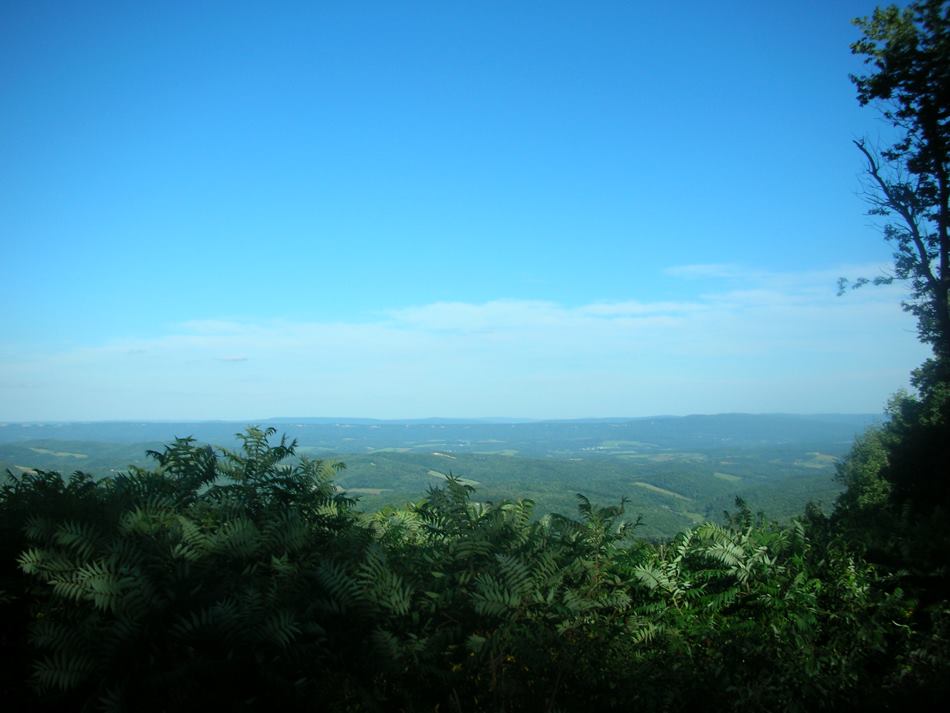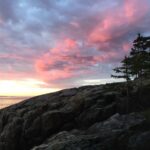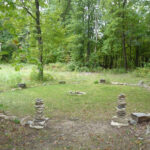In the 1990’s, now Grand Archdruid of the Ancient Order of Druids in America, Gordon Cooper, developed the idea of “wildcrafting your own druidry”; this practice is defined as rooted one’s druid practice in one’s local ecology, history, legends and magic. In today’s age of adapting and drawing upon many different traditions in the quest for spiritual wholeness, we sometimes forget that all knowledge regardless of how ancient it is (like the Celtic Tree Alphabet and divination system, the Ogham) was originally developed in local culture and ecosystem. Thus, too, I believe our spiritual practice reflects our own local ecologies and ways of understanding. I’m going to expand on some of Gordon’s ideas here and talk about my own work with “local druidry” or “ecoregional druidry” and how to put some of this into practice to create a “druid’s wheel of the year” that is specific to your local ecology and customs. While I’m using druidry as an example here, anyone who is following a nature-based spiritual path and using the wheel of the year as their structure of holidays would benefit from such information.
Dividing Up the Landscape

Before we get into how to adapt some of the druid path practices and material to a local setting, it’s important to understand the different ways in which we can divide a landscape into smaller units that are more uniform. Most of us understand divisions from a political sense: the line that separates two countries, states, or provinces. These divisions may help us understand some of the different cultural practices that we can draw upon that are regionally or locally-based. Local feasts, local foods, local agricultural practices, local traditions and folklore all may contribute to our own understanding of ecoregional druid adaptations (and I’ll talk more about those in a second post).
However, political lines only occasionally follow ecological boundaries, and so we also need to understand something about ecological boundaries. At the largest level are ecozones (like the Nearctic ecozone, which constitutes most of North and Central America) and bioregions (like the Eastern United States). These bioregions are very large areas that have many, many different ecosystems within them, but do share some broader characteristics (such as patterns of light and darkness throughout a year). For our purposes, likely the most appropriate place to look is at the level of the ecoregion (or ecological region) which is, according to Brunckhorst (2000) is a “recurring pattern of ecosystems associated with characteristic combinations of soil and landform that characterize a region.” This may include patterns that repeat in the geology, physiography, vegetation, climate, hydrology, flora and fauna and soils of a land area. In the case of the United States, the Laurentia ecoregion also includes all of New England, the Mid-Atlantic, the upper Midwest east of the Mississippi as well as parts of South-Eastern Canada. Within this ecoregion, there are many ecosystems that are unique to their specific locations but also broader species that are shared across them.
With knowledge of both your regional or local traditions and ecoregion and local ecosystems, you are well on your way to adapting your druid practice.
The Adapted Wheel of the Year
The holidays that make up the wheel or cycle of the year in the druid tradition follow the path of the sun and include the solstices and equinoxes are determined by the path of the sun. The solstices, equinoxes, and cross quarter days manifest differently upon the earth in quiet dramatic ways. The modern wheel of the year, which is celebrated by druids, was developed in Great Britain from older agricultural holidays from Europe. While it fits the UK ecosystem quite well, it may be far less appropriate Texas, USA or Australia. Particularly, while the astronomical event of the longest day and longest night are present always, how they manifest on the earth is tied to how the holidays are celebrated. For example, in the UK or Eastern US, the Fall Equinox is a ritual devoted to harvest because that’s what’s happening in the landscape. Many different adaptations of the wheel of the year have been created by druids all over the world, unique to their ecosystems.

Further, the four-season model present and assumed in the Wheel of the Year is based on a temperate climate. Some druids don’t live in regions with four seasons. Even within a temperate ecosystem, each season may vary considerably by weeks or months, with different bloom times. Each year also is variable; a warm and early spring equals a growing season that has flowering and fruiting maturing earlier. And so why the sun and solar currents are steady, dependable, and predictable, the hydrological cycles, weather, and manifestation of the season on the earth herself is ever-changing. It seems, then, to create a truly representative body of holidays, we must observe both the progress of the sun across the sky, but also consider the role of the specific season upon the earth and how it manifests where we live.
While the overall themes of the wheel of the year manifest in most ecosystems (a time of light/spring, a time of harvest, a time of being indoors/shelter (which might be from sun or cold, depending on the location), these are not consistent with the traditional wheel of the year in many places. Not all locations have traditional spring, summer, winter, and fall. And so, some druids may find it necessary to develop a modified seasonal cycle and wheel of the year. For example, a wheel of the year in the tropics might include a dry season and a stormy season; this would drastically change the nature of the seasonal celebrations and the overall themes.
Deepening the Wheel of the Year: Adding Ecoregional Sacred Observances
Even if you live in a temperate climate (like I do) that is fairly representative of the standard wheel of the year, one of the ways you might adapt the wheel of the year is by adding in what I call minor sacred observances. These, unlike the path of the sun or cross-quarter days, do not have specific dates on a calendar set by the consistent path of the sun and patterns of light and dark. Rather, they mark a period in time in the ecosystem, and that specific occurrence changes from year to year.
Through a period of observation and interaction, which involved being out in every season and through all kinds of weather, certain events seemed particularly meaningful and salient in my ecosystem. These were events that I noticed happened with regularity and also that were notable or striking to me in some way. I also used some of my own knowledge of past local history and lore. This wheel of the year took me over a decade to fully develop and, just as importantly, changed substantially when I made the move from Michigan to Pennsylvania a few years back. Here it is in its current form:

Anything that is in between the eight holidays is mostly variable – like the first hard frost or first snowfall. These are particularly significant events that happen each year, and I make note of them and honor them when they occur. I also have noted important dates that connect me to seasonal activities and the land–the yearly creation of Pysanky eggs, a longstanding family tradition. Additionally, all of my gardening and homesteading activities help root me firmly in the ecosystem like starting my seeds, preparing beds for the fall, harvesting, and so on. You’ll also see that I have included what I consider to be important markers of changes in my local ecosystem, like the chirping of the Katydids or the blooming of the hawthorn.
You’ll notice on my map, Groundhog Day is included for a simple reason: I live 40 minutes south of Punxsutawney, PA, who has an annual tradition of doing a groundhog weather prognostication (a fancy word for divination) describing how soon winter will end by reading Phil’s shadow. Because of that bit of regional and honored folk magic, I tie my own Imbolc celebrations in with the general regional celebrations for Groundhog day on Feb 2nd and do divination for the coming year at that time.
Of course, a different druid (even one living in the same ecoregion) might have a very different calendar of events. For example, when I lived in the Great Lakes region of the US, the full freezing over of the ice on the lakes (so that you could walk, skate, or ice fish) was a memorable occurrence, as was when the first crack in that same ice appeared. For some druids near the coast, the monthly “tidal bulge” might be particularly salient or the blooming of the beach rose. This is all to say that your own earth-centered holidays and even more specialized seasons themselves can be developed in line with your observations of local ecosystems and ecology. The more that you know about the world directly around you, the more you will have a sense of what is sacred and meaningful about that world. Perhaps you don’t have a winter, but you have a season of fog—that would change how and when you celebrated that season.
Suggestions for Developing and Extending Your Wheel of the Year

I see this kind of ecoregional calendar as the next step in the druid tradition: we have a set of solstices, equinoxes, and cross-quarter days that occur with regularity and that help bring us together. And these are determined by the path of the sun. But each druid or group of druids might find their own way forward: the general principle here is that part of the druid tradition ties sacred ecological knowledge with an honoring of the cycles of nature and the cycles of the year. Or, you might choose to keep the solstices and equinoxes and do away with the cross-quarter days entirely (as they are agricultural) and instead, build in other holidays or sacred moments that are important to you and your region.
How you develop your own seasonal calendar is up to you—it is about what is salient on your immediate landscape, the landscape you inhabit each day. Here are some suggestions:
- Nature observations: You might start by observing nature in your area for a full year and then noting: what is changing? What is different? How important are those changes to you?
- Interview the Old Timers and Wise Folks: Talk with the old farmers, wise women, grannies, and grandpaps in the area who have an innate knowledge. Ask them how they know spring has arrived, or that fall is coming. You might be surprised with the level of detail you get!
- Look to local farmers and farm products. A lot of traditional agricultural customs and products are directly dependent on the local ecosystems. You’ll see that reflected in my map above—the flowing of the maple sap, for example, as well as the budding of the maple tree are significant to me both because I have done sugaring most years, but also because of the broader cultural custom in this part of the US.
- Look to local customs and traditions. You might pay attention to regional or local fairs (like the celebration of the maple tree present in my region) and/or look at regional calendars to see what the important dates are. Some of these may be contemporary customs (like Groundhog Day) or customs that used to take place but no longer do (like Wassailing in January). Reading about the history of your region, particularly, feasts, celebrations, and traditional activities might give you more insight.
- Consider family observances. Some families develop their own traditions, and some of those might be worth considering. For others, family traditions are often religious and may belong to a religion that you no longer want to associate with, and that’s ok too.
- Consider where the “energy” is. What is this season about? Where is the energy and power in the land at present? For example, for me around the Spring Equinox here (late March) nothing is blooming. But what is happening are the robins are starting to return and the maples, birches, hickories, and walnuts are running with their sap. And the maples, in particular, are in a place of their highest power of the year (which I understand from talking to them and sensing their energy over a long period of time). Maple, then, features predominantly in my local druid calendar as well as in ritual work that I do at that time.
- Speak with the nature spirits. Perhaps the most powerful thing you can do is to connect with the nature spirits, the powerful energies of the landscape where you live, and see what wisdom they have for you (using any number of inner communication or divination methods).
And so, with some observation, intuition, and research, you can develop a highly personalized “wheel of the year” calendar that is eco-regional and very specific to your druid path. I’ll continue to examine this topic next week, when we explore how to develop localized rituals, observances, and activities for your wheel of the year.




Thank you Dana,
I am inspired by this post to make my own calendar and track the important events for a few years. Next Beltane, I hope to launch my sailing dingy and at the Fall Equinox, to remove it from the water. There is also the herring run to track and the first Colombian-Blacktail fawn spotting. The arrival and departure of the Rufus hummingbirds. The first Swainson’s thrush song and the last. The first of the strawberries and the first of the apples. The migration of the Death newts and the blooming of the bitter cherry.
Under your kind influence, I am sinking deeper into Druidry each day and am being made gentle.
For one of my Earth Path changes as a Candidate, I started washing my hair with soap and rinsing with dilute vinegar. (Then rinse that out with clean water if you want to give this a try.) I was at the Farmer’s Market yesterday and bought some lavender goat’s-milk soap to wash my hair. Fern handed me the soap and said, “Because of you, everyone is buying my soap to wash their hair!” Isn’t that fun?
Yours under the dry red cedars,
Max Rogers
Hi Max! I’m glad to hear of your druid calendar-in-the-making! Those sound like important events for your life and ecosystem.
I love the goat milk soap story :). I haven’t tried it–but I will! I have some bars I bought at the farmer’s market from last year still!
Thanks for commenting and reading!
Excellent post Dana, thank you for this idea.
Reblogged this on ravenhawks' magazine.
Reblogged this on Rattiesforeverworldpresscom and commented:
Very nice 🙂
OMGs!!!!! I love your personalized Wheel of the Year, adapted to the environment where you live. This is something I feel strongly drawn to doing and in many ways have already been doing, but not noted in such a formal, symbolic way. I’m absolutely going to do ths and found myself immediately starting it even while reading this post. Thanks and Blessings to You!
I’m so glad you found it useful :). I’m excited to see what you come up with!
thank you for mentioning the Four Quarters Interfaith Sanctuary – I wasn’t aware of that place and now I am!
It is an amazing place! I learned about it a few years ago :).